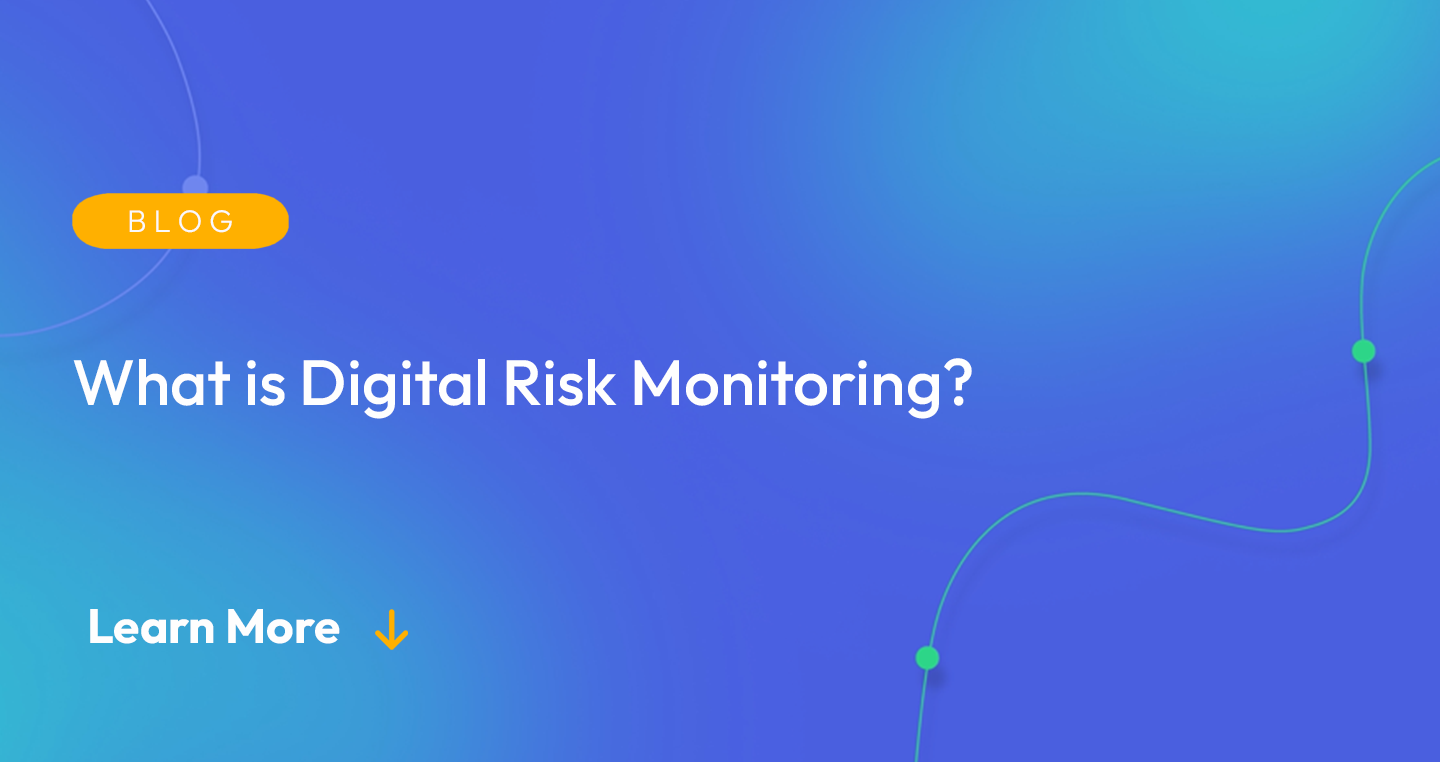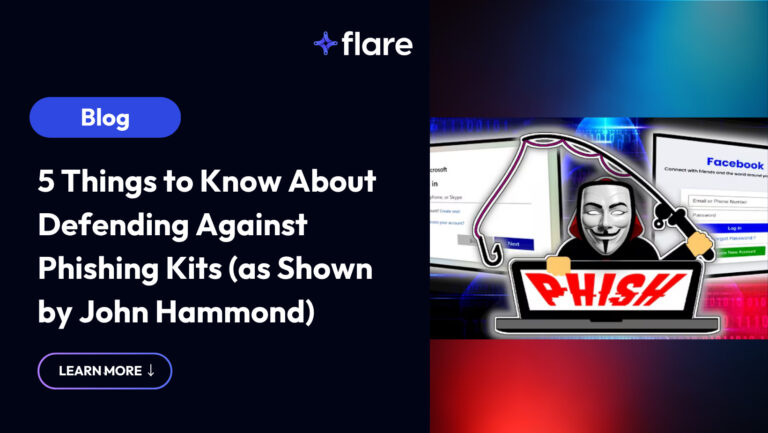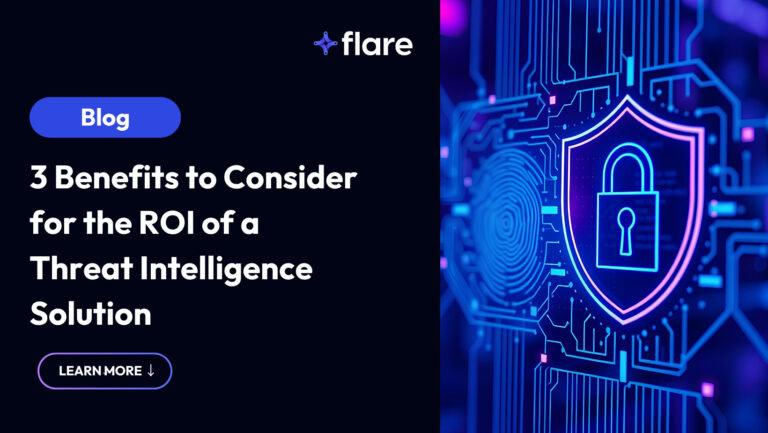
It’s no secret that cyber threats are proliferating. In just the past 12 months, major ransomware attacks such as against Colonial Pipeline and against the U.S. meat industry have resulted in significant real-world impacts. At the same time major software providers such as Solarwinds have been the victim of large scale compromises.
To counter the increasing number of threats, the past decade has seen explosive growth in cybersecurity budgets. Companies are investing heavily in improving their cybersecurity posture to boost their digital risk protection.
As a result, many companies have seen significant improvements in their internal cybersecurity posture. However, getting external visibility into data living outside your environment, as well as the overall company attack surface is still lagging.
Incorporating effective digital risk monitoring can help your organization reduce risks, identify exposed IT assets, and prevent account takeover attacks. This article will explain the basics of how you can effectively monitor sources of digital risks, and take effective measures to mitigate excessive risk.
What is Digital Risk Monitoring?
Digital Monitoring is the practice of performing external scans (scans outside of your IT environment), to identify potential risks. Digital risks can take a variety of forms and could include technical information leakage, stolen credentials, or compromised accounts being sold on the dark web.
Digital Risk Monitoring enables companies to complete the picture and gain understanding of external risks to their organization. Having visibility into internal security is critical, but actively monitoring the dark web and other key locations of leaked information can help stop security incidents from becoming data breaches.
Key Areas to Monitor for Digital Risk
1. GitHub
Monitoring GitHub can help you identify if sensitive information (such as secrets) is accidentally committed to a production environment. Monitoring GitHub can help identify technical data leakage and allow you to remediate before a malicious actor finds it.
2. Paste Sites
Pastebin and other paste sites allow developers and the broader public to quickly share plain text information. While many uses are innocuous (such as sharing new code), some malicious actors have been known to dump stolen usernames and passwords.
3. Dark Web Marketplaces
The Dark Web is an area of the internet only accessible with a TOR browser. Contrary to popular belief the dark web isn’t just composed of illegal material. However, many sites are criminal in nature and some sell hacked accounts, privileged access, proprietary source code, and other confidential information.
4. Lookalike Domains
Phishing accounts of an astounding percentage of cyberattacks. Monitoring for newly setup domains can help alert you to a potential spear phishing campaign before your employees begin receiving emails.
5. AWS S3 Buckets
Many companies have data exposed through AWS S3 Buckets. Improperly configured permissions can easily result in information leakage that can lead to significant business loss.
Mitigating Digital Risk
Mitigating digital risks is crucial for organizations looking to protect their internal assets from data breach or ransomware attack. Here are a few steps you can take to get a handle on the problem and begin actively reducing risk.
Understand where your Data Lives
One of the most critical components of cybersecurity is understanding your data. This involves both understanding where internal data resides but also what is either externally facing or fully external.
Take the time to consider the types of data you work with. Are you handling large amounts of personal health data, personal financial data, or other highly-sensitive and regulated data? If so, how is it stored and what protections are in place?
Do you feel that you have a good understanding of data external to your organization? Are you actively monitoring the dark web for stolen account credentials? Do you have a process in place to ensure that permissions are set sufficiently to prevent technical information leakage?
Answering these questions can help you identify areas that you need to concentrate your resources on. If you don’t work with much sensitive data, but own valuable source code, it might make sense to concentrate efforts around preventing information leakage.
Conversely if your organization works with personal health information, monitoring the dark web for potential account takeover schemes may yield better results.
Actively Monitor for Digital Risks
Every organization should be monitoring the deep, dark, and clear web to understand their digital footprint. Even if you are confident in your cybersecurity profile, employees can make mistakes and technology can fail.
A digital risk protection platform can make it dramatically easier to identify potential risks. Platform’s like Flare’s Firework allow you to seamlessly input the data you are concerned about, and receive automatic notifications if exposed credentials, leaked technical data, or lookalike domains are found.
Employ the Principle of Least Privilege
When configuring S3 Buckets, internal networks, GitHub, and other core assets, make sure to utilize the principle of least privilege. Employees should never be given blanket administrative access, and should only be able to access what is strictly necessary to perform their role at the company.
If an account takeover does occur, this can make it significantly more difficult for malicious actors to gain access to highly sensitive data and services, effectively limiting the severity of the data breach. When coupled with active digital risk monitoring it can enable you to quickly respond to account takeover attacks and prevent large amounts of information from being exfiltrated.
Don’t Forget Third-Party Risk
No matter how well defined your cybersecurity program is, and no matter how much digital risk monitoring you perform, third-parties can still result in data breaches and compliance risks. Many organizations today work with dozens, or even hundreds of vendors across multiple departments which leaves them at risk for disruption if a vendor experiences a data breach.
Monitoring not only to determine whether your own organization has exposed credentials on the dark web, but critical third-party vendors can also help reduce the risk of a data breach. If a third-party vendor does have credentials for sale on the dark web, this enables you to alert them and minimize their access to sensitive systems and data until the problem is resolved.
Digital Risk Monitoring and Flare
Proactively monitoring for digital risks can be initially challenging to set up from a reactive cybersecurity posture. However, implementing digital risk monitoring is crucial for protecting your organization from the worst ransomware attacks and other threats.
Flare’s Cyber Threat Exposure Monitoring (CTEM) automatically monitors external threats to your organization on the clear & dark web, and illicit Telegram channels. Utilizing a digital risk protection solution can enable you to proactively hunt for threats and reduce the likelihood of technical information leakage, phishing attacks, and data breaches so your threat intelligence team can respond faster to mitigate risks.
Sign up for a free trial of Flare.





